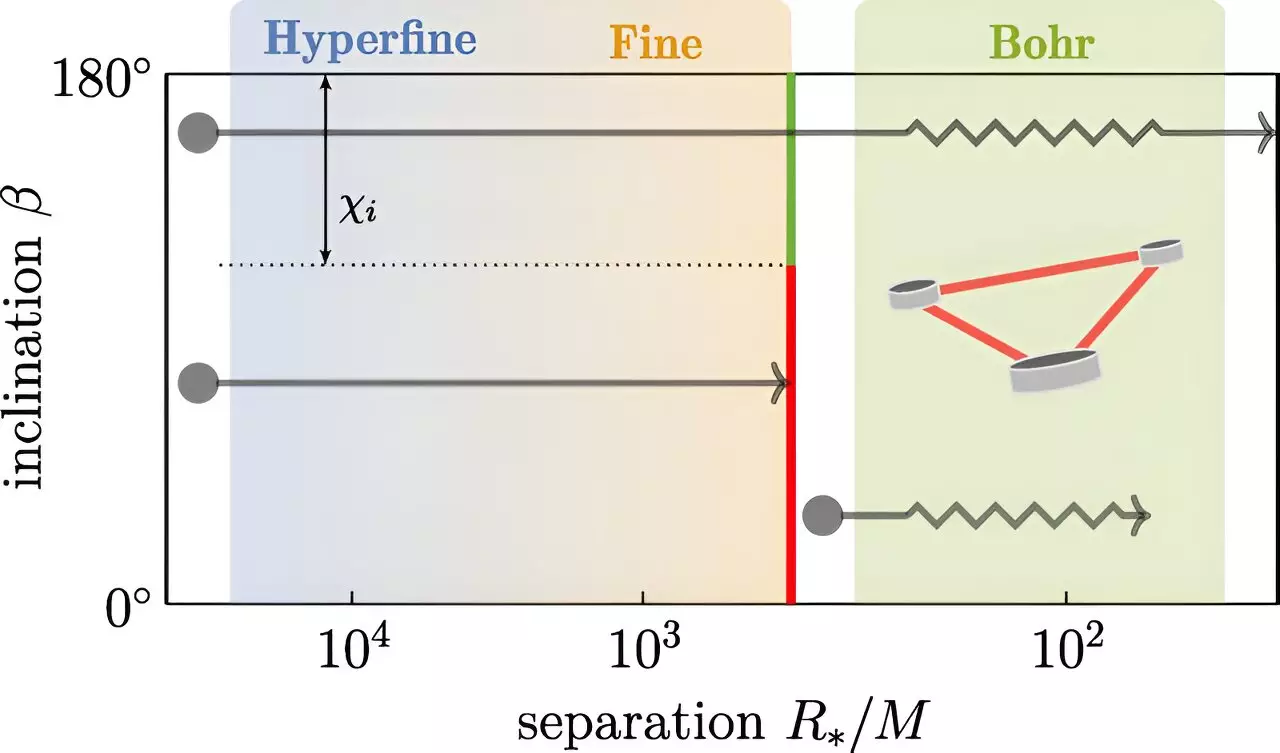In an enlightening new study published in *Physical Review Letters*, a collaborative team of physicists from the University of Amsterdam and the Niels Bohr Institute in Copenhagen have embarked on a groundbreaking journey to understand the universe’s more elusive facets. By scrutinizing the merging of black hole pairs, these researchers propose that detailed gravitational waves emitted during such cosmic events could act as beacons, shedding light on the existence of new and currently unobserved particles. This significant work synthesizes six years of research, combining advanced theories and observations from previous studies, and stands at the intersection of gravitational physics, atomic theory, and particle physics.
Gravitational waves represent ripples in spacetime that signify the cataclysmic events occurring in the cosmos, such as the collision of black holes. The essence of this latest research lies in gravitational waves’ ability to carry detailed information about the orbital dynamics of these black holes. According to the researchers—Giovanni Maria Tomaselli and Gianfranco Bertone from UvA, along with former master’s student Thomas Spieksma—these waves provide crucial insights that could unearth the existence of ultralight bosons, which may be defined as particles lighter than those currently known to science.
A fundamental aspect of this exploration is the physical phenomenon known as black hole superradiance, where a rapidly spinning black hole can lose a portion of its mass to form a particle cloud, referred to as a “gravitational atom.” This term signifies the analogy between the structure of this particle cloud and the electrons that orbit a nucleus in a traditional atom. Understanding this mechanism is paramount for probing deeper into the potential existence of new particles that could potentially address many unresolved questions in the realms of astrophysics and particle physics.
Over the years, researchers at the University of Amsterdam have identified various dynamic behaviors among binary black holes in the presence of ultralight boson clouds. They discovered significant phenomena such as resonant transitions, whereby the particle cloud can shift between different states, mimicking behaviors seen in conventional atomic structures. Additionally, they explored how portions of the cloud can be ejected—a process called ionization—which similarly creates distinguishable patterns in emitted gravitational waves.
The systemic evolution of black holes and their particle clouds into one coherent framework allows the scientists to draw conclusions that enhance our comprehension of complex gravitational atoms. This new study consolidates previous findings into a unified model that tracks the life cycle of binary black hole mergers, from their formation to merger events.
The outcome of the research reveals two notable scenarios that can arise from such dynamics, each presenting a vital opportunity for future detection of elusive particles. If the black holes and particle clouds exhibit an outward rotation pattern in opposition to one another, the particle cloud remains intact, possessing properties that could render it detectable through the ionization process. This results in unique gravitational wave imprints—an exciting prospect for particle physicists searching for elusive ultralight bosons.
Future Directions: Observations and Implications
Consequently, this study not only enriches the dialogue surrounding particle existence but also provides practical strategies for upcoming observational campaigns. The binary systems, should they be altered to demonstrate particular values of eccentricity and inclination, offer an additional avenue for detecting new particles through gravitational wave signatures. These characteristics can thus be analyzed in the gravitational wave signals, allowing researchers to discern the presence of ultralight bosons or to identify anomalous gravitational configurations.
With rapidly advancing observational technologies and methods, this research inspires optimism for the discovery of new physics residing beyond the standard model. As the scientific community prepares for more nuanced gravitational wave measurements, the implications of successfully identifying these ultralight particles could revolutionize our understanding of the universe itself. The puzzles of dark matter, energy, and even cosmic structure formation may find resolution with these discoveries, marking a pivotal chapter in the ongoing quest to unlock the secrets of the cosmos. As we leap into this new era of exploration, the merging of theoretical insights and observational evidence promises a deeper understanding of both the very fabric of reality and the mysterious forces that govern it.

